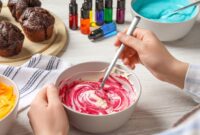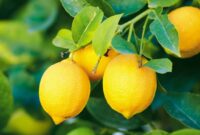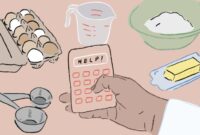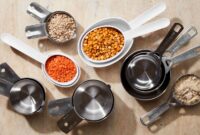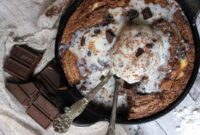Embarking on a culinary journey often entails mastering the intricate language of kitchen measurements. Yet, amidst the array of teaspoons, tablespoons, and cups, the enigmatic realm of fractions can leave even seasoned chefs perplexed. Today, we unravel one such conundrum: What exactly constitutes half of a 3/4 cup measurement? Delving into the realm of kitchen math, we embark on a quest to demystify this puzzle, offering clarity to both novices and culinary aficionados alike.
In the realm of gastronomy, precision reigns supreme, and understanding the nuances of measurements is akin to wielding a chef’s most potent tool. However, the labyrinthine world of fractions often poses a formidable challenge, goldplush.com leaving many scratching their heads in confusion. Fear not, for within this complexity lies a simple yet elusive answer: What Is Half of a 3/4 Cup. As we delve deeper into the arithmetic of the kitchen, we unveil the secrets hidden within this seemingly innocuous fraction, empowering cooks of all levels to conquer the culinary landscape with confidence and precision.
What Is Half of a 3/4 Cup Measurement? Unlocking Kitchen Math
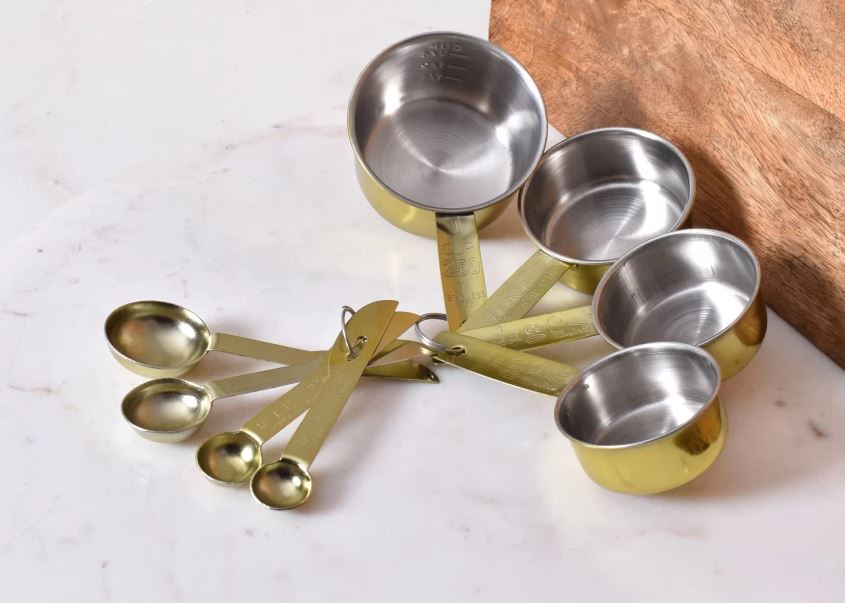
Unlocking Kitchen Math: Deciphering the Mystery of Halving 3/4 Cup and Other Tricky Measurements
In the realm of cooking and baking, the need to halve a recipe often arises, whether it’s for portion control, accommodating smaller gatherings, or simply avoiding waste. Despite any apprehensions about tinkering with measurements, adjusting quantities doesn’t have to be daunting. Understanding the fundamentals of kitchen measurements, particularly in the US system of spoons and cups, lays the groundwork for seamless recipe scaling.
A standard set of measuring cups typically includes 1/4 cup, 1/2 cup, 1 cup, and occasionally 1/3 cup measurements. Likewise, a standard set of measuring spoons comprises 1/4 teaspoon, 1/2 teaspoon, 1 teaspoon, and 1 tablespoon. These measurements follow a logical progression, where doubling or halving quantities is straightforward:
– Two 1/4 cups equal 1/2 cup.
– Four 1/4 cups equal 1 cup.
– Two 1/2 cups equal 1 cup.
– Three 1/3 cups equal 1 cup.
Similarly, in the realm of measuring spoons:
– Two 1/4 teaspoons equal 1/2 teaspoon.
– Four 1/4 teaspoons equal 1 teaspoon.
– Two 1/2 teaspoons equal 1 teaspoon.
– Three teaspoons equal 1 tablespoon.
For those needing to convert between spoons and cups, a simple metric can be applied:
– 1 cup equals 16 tablespoons.
– 1/2 cup equals 8 tablespoons.
– 1/4 cup equals 4 tablespoons.
Understanding these conversions empowers home cooks to confidently adjust recipes to suit their needs, ensuring culinary endeavors are both enjoyable and efficient. Whether it’s for a cozy dinner for two or a small gathering of friends, mastering the art of recipe halving opens doors to a world of culinary possibilities without the fear of overwhelming quantities or wasted ingredients.
Decoding Kitchen Math: Determining Half of a 3/4 Cup
When it comes to halving measurements, handling whole numbers like a full cup or half a cup is straightforward. However, what about when you need to halve 3/4 cup? Understanding this fraction might seem daunting at first, but breaking it down simplifies the process.
Given that 1/4 cup equals 4 tablespoons, we deduce that 3/4 cups equals 12 tablespoons. Therefore, half of 3/4 cup equates to 6 tablespoons, or equivalently, 1/4 cup plus 2 tablespoons.
If you prefer minimizing the number of measuring utensils used, another approach is to consider using 1/3 cup as half of 3/4 cup. Since 3/4 cup is equivalent to 0.75 cup, halving it results in 0.375, which closely resembles 0.333, or 1/3 cup. While there might be a slight variance of a few hundredths of a cup, in most recipes, this deviation is negligible. Thus, opting for 1/3 cup as half of 3/4 cup is a practical and convenient solution in many culinary scenarios.
Cracking the Kitchen Code: Unveiling Half of a 1/3 Cup Measurement
Indeed, halving 1/3 cup can pose a challenge when attempting mental calculations. Given that 1/3 cup translates to 5 tablespoons plus 1 teaspoon, or 16 teaspoons in total, simplifying this fraction requires a bit of ingenuity.
To halve 1/3 cup, we can divide it into 2 tablespoons plus 2 teaspoons, equivalent to 8 teaspoons in total. This breakdown offers a practical solution for achieving what is half of a 3/4 cup without the need for complex arithmetic.
Cracking Kitchen Conundrums: Revealing Half of a 1/4 Cup Measurement
When confronted with the challenge of halving a measurement as small as 1/4 cup, the solution becomes more straightforward due to the simplicity of this fraction.
Since 1/4 cup is equivalent to 4 tablespoons, halving it results in 2 tablespoons. Therefore, half of 1/4 cup is simply 2 tablespoons, making it a manageable task even without specialized measuring tools.
Streamlining Your Cooking: A Handy Reference Chart for Scaling Down Recipes
The conversion chart provided below offers a convenient reference for adjusting common measurements, providing both half and one-third of the original amount. This tool proves invaluable for those moments when you need to scale down a recipe without the hassle of complex calculations.
| Amount | 1/2 of Amount | 1/3 of Amount | Description |
| 1 cup | 1/2 cup | 1/3 cup | Standard cup measurement |
| 3/4 cup | 1/4 cup + 2 tbsp | 1/4 cup | Three-fourths of a cup |
| 1/2 cup | 1/4 cup | 2 tbsp + 2 tsp | Half of a cup |
| 1/3 cup | 2 tbsp + 2 tsp | 1 tbsp + 1 1/4 tsp | One-third of a cup |
| 2/3 cup | 1/3 cup | 3 tbsp + 1 1/2 tsp | Two-thirds of a cup |
| 1/4 cup | 1/8 cup | 1 tbsp + 1 tsp | Quarter of a cup |
| 1/8 cup | 1 tbsp | 2 tsp | One-eighth of a cup |
| 1 tbsp | 1 1/2 tsp | 1 tsp | Tablespoon |
| 1 tsp | 1/2 tsp | Heaping 1/4 tsp | Teaspoon |
| 1/2 tsp | 1/4 tsp | N/A | Half of a teaspoon |
| 1/4 tsp | 1/8 tsp | Dash or pinch | Quarter of a teaspoon |
This table provides a comprehensive guide for halving and one-thirding common cooking measurements, along with descriptions for each measurement.
Navigating Kitchen Measurements: A Comprehensive Guide to Halving Wet Ingredients
In culinary endeavors, wet ingredients like water, oil, and vinegar are typically measured using liquid measuring cups rather than standard dry-ingredient cups. Alternatively, for smaller quantities of liquids such as extracts, measuring spoons suffice. However, when dealing with thick or viscous wet ingredients like sour cream or peanut butter, opting for dry-ingredient measuring cups may offer greater ease and accuracy.
Despite the variation in measuring tools, the principle of halving amounts remains consistent for both dry and wet ingredients. The reference chart provided earlier can be applied seamlessly to halve the quantities of wet ingredients, ensuring precision in culinary endeavors regardless of the ingredient’s viscosity or consistency.
Diving into Kitchen Math: Mastering the Art of Halving Ingredients Beyond Cup and Spoon Measurements
When faced with the challenge of halving ingredients like eggs, which aren’t measured in conventional cups or spoons, finding the right approach can indeed be tricky. However, there are several strategies you can employ to tackle this dilemma effectively.
Cracking the Egg Dilemma: A Guide to Halving Eggs in Recipes
When it comes to halving a single egg, I have a simple method that works like a charm. First, I crack the egg into a small bowl or coffee cup. Then, I use a fork or whisk to thoroughly beat the egg until the yolk and white are fully combined.
Once the egg is well-mixed, I measure out 2 tablespoons of the egg mixture. This portion serves as the perfect half of the egg needed for my recipe, ensuring precise measurements without any waste.
Trimming Butter Portions: A Step-by-Step Guide to Halving a Stick of Butter
Cutting a stick of butter in half is a breeze, thanks to a helpful feature found on most butter packaging. Typically, butter sticks come wrapped with markings indicating tablespoons.
To halve a stick of butter, simply locate the 4 tablespoon mark on the wrapper. This serves as the midpoint, allowing for a clean and effortless cut, as there are 8 tablespoons in a standard stick of butter.
Metric Marvels in the Kitchen: Embracing the Metric System for Baking and Cooking
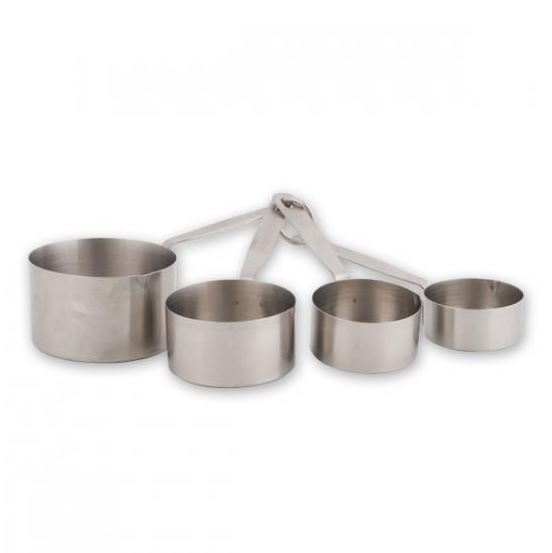
While the US cups and spoons system is commonly used in cooking and baking, many countries employ the metric system for measurements. Familiar to most from science classes, the metric system utilizes units such as grams and liters, along with their smaller and larger increments like milligrams, kilograms, and milliliters.
As someone with experience in both teaching and nursing, I’ve become adept at navigating the intricacies of the metric system. However, for culinary purposes, I still rely on the familiarity of the US measurement system.
If you encounter a recipe written in metric units, halving the ingredients is a straightforward process. Simply halve the specified amount. For example, if a recipe calls for 500 grams, you would halve it to 250 grams. Similarly, if the recipe lists 250 milliliters, you would cut it down to 125 milliliters. This simple conversion allows for seamless adjustment of recipes, regardless of the measurement system used.
Balancing Act: Mastering the Art of Halving Ingredients Using a Kitchen Scale
When measuring ingredients by weight, a kitchen scale proves invaluable for precision and accuracy. Simply place your measuring cup or bowl on the scale, then zero out the scale to account for the weight of the container.
Next, carefully add your ingredient to the cup or bowl, monitoring the numbers on the scale as they increase towards your desired amount. Adjust the quantity as necessary, adding or subtracting until you reach the precise weight required for your recipe. With a kitchen scale, achieving accurate measurements becomes a straightforward task, ensuring consistent results in your culinary creations.
Dividing Delicacies: Halving Metric Ingredients Without a Scale
If a kitchen scale isn’t readily available, there’s still a workaround that allows you to achieve accurate measurements. By converting metric measurements to the US cup and spoon system, you can then utilize our handy reference chart to adjust ingredients by half as required.
While this method may involve a bit more effort, it proves effective in a pinch when a kitchen scale isn’t on hand. Simply follow the conversions and adjustments outlined in the chart to ensure your recipe turns out just right, even without the aid of a kitchen scale.
Weighing the Options: Exploring the Value of a Kitchen Scale
I’ll admit, I went for years without owning a kitchen scale myself. However, since getting one a couple of years ago, I’ve come to appreciate its usefulness.
The great thing is, kitchen scales are quite affordable. You can easily find one on Amazon for less than $20, making it a worthwhile investment even for occasional use.
If you frequently use metric recipes, I’d say a kitchen scale is a must-have tool in your culinary arsenal. However, if like me, most of your recipes are measured in cups and spoons, it’s not necessarily essential but can definitely be beneficial.
Personally, I find my kitchen scale most handy when dealing with metric units, such as in sourdough recipes, or when precise measurements are crucial. Have you ever encountered a recipe calling for 2 pounds of potatoes, a pound of broccoli, or 6 pounds of apples? In such cases, a kitchen scale proves invaluable, eliminating the need for guesswork and ensuring accuracy in your cooking endeavors.
Conclusion
In the journey through the labyrinth of kitchen measurements, unraveling the mystery of halving a 3/4 cup measurement has been both enlightening and empowering. From decoding fractions to mastering the art of precise adjustments, delving into kitchen math has revealed the beauty of culinary precision. By understanding the logic behind measurements and utilizing practical techniques, such as the conversion chart provided, home cooks can confidently navigate recipe scaling with ease. Whether it’s halving a stick of butter or determining what is half of a 3/4 cup, the keys to unlocking kitchen math lie within our grasp, promising culinary success and satisfaction with every dish.
As we bid adieu to our exploration of kitchen math, let us carry forward the invaluable lessons learned. Embracing the marriage of precision and creativity in cooking, we embark on future culinary endeavors armed with newfound confidence and skill. With each recipe halved and every measurement adjusted, we celebrate the triumph of culinary ingenuity and the joy of mastering the art of kitchen math. Here’s to unlocking the secrets of the kitchen and savoring the delights of culinary exploration, one perfectly halved measurement at a time.
